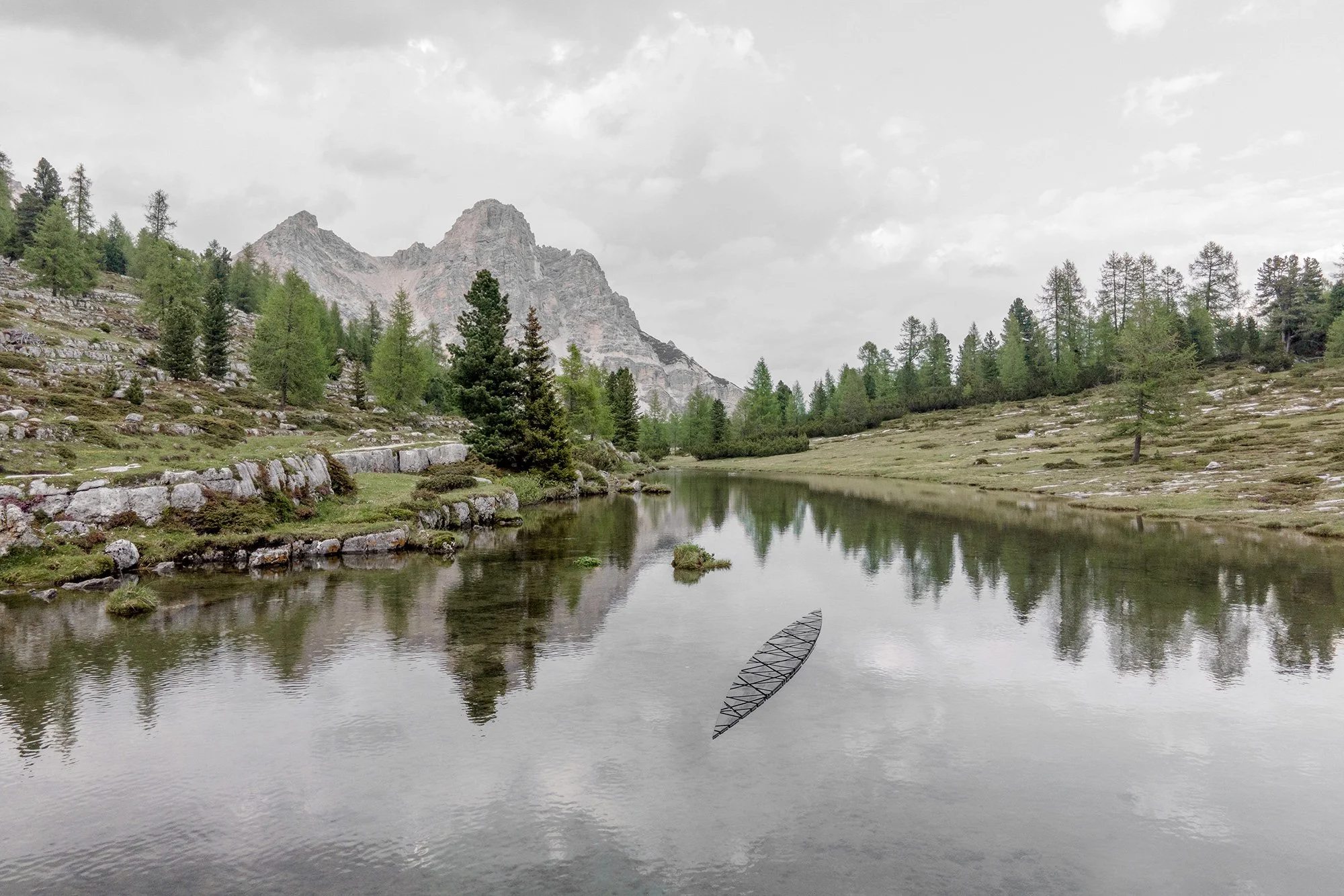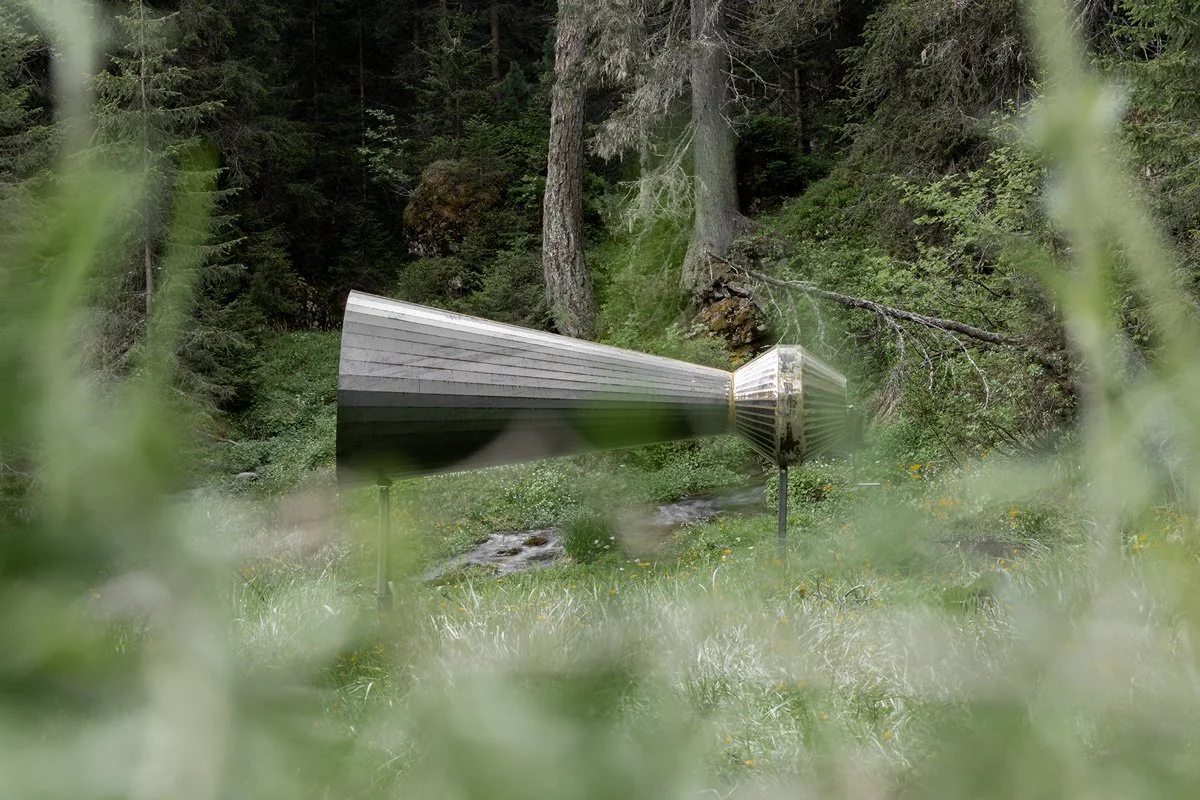Entanglement
Alex Xiaotan Yang, Wentao Guo
In Italian, the word “entanglement” can be translated as “bond” or “connection.” The artwork refers to the material and physical interconnections that exist between the farmer, the scythe blade, and the stone that sharpens it, or the digital connections that today’s technology user activates to get a response to their initial command. The reference to manual scything is made clear by the installation’s form, which is that of a whetstone: the tool used to sharpen a scythe and the symbol of this edition of the SMACH Biennale, dedicated to the relationship between humans and technology. Placed in the water, the black silhouette of “Entanglement” appears as a cut, a fissure—a disturbing element inserted into the idyllic scenery, reminding us how technological evolution has allowed humanity to dominate the animal, plant, and mineral kingdoms.



Exhibit place Fanes
Following the route of the transhumance when it ‘desmunta’, i.e. descends into the valley, our route also takes us further down towards the altitude of 1800 metres and to the Fanes entrance: the Lavarella refuge, the Green Lake and the Limo Lake. This is also the entrance to a mythical area, that of the Fanes Kingdom, so rich in legends and the Ladin ‘contíes’. So rich that we leave it up to you to delve into them through the links you will find here, as well as through a few keywords: the kingdom of marmots (in this very area there is a particular rock formation that is called the ‘parliament of marmots’!), Dolasilla, Moltina, Spina de Mul, Ey de Net. In addition, Ladin myths tell of the ‘ganes’, the ‘salvans’, the ‘malans’, the ‘pavarò’, the ‘Orco da La Val’, the ‘Bau’, in short, the multifaceted population of the Ladin forests and folklore stories. Or even the legend behind why the Dolomites are also called crëps stlauris, the pale mountains. Speaking of geology, the rocks are so clear because, as French geologist Déodat de Dolomieu (hence the name Dolomites) guessed in the late 1700s, they are formed of calcium carbonate and magnesium. They are sedimentary in origin and arise from the mineralization process of very ancient coral reefs. Basically, they are shells, corals and mollusks turned to stone. In Fanes, in addition to the main dolomite, we also find Dachstein limestone and gray limestones; outcrops of red ammonitics, limestones containing large spiral fossils, and reddish-gray cretaceous marls. The rocks of this plateau range in age from 225 to 190 million years, in geological terms these are “young” rocks.
Returning to legends but also to the interpretation of the subject matter. Ulrike Kindl, an expert on Alpine folklore and Ladin-speaking linguistic minorities, writes that the importance of legends is that they are “bearers of a symbolic thought that narrates the Dolomite world of ancient times but that can only be understood through precise keys of interpretation that we no longer have, however.” Ladin ‘contíes’ therefore do not tell a true story, but evoke an image and provide with it a truth older than the true story. It is therefore necessary to decipher the iconic signs in order to interpret the message correctly. As already written in the call for entries, we too wish to stimulate symbolic thought, because as Horace wrote over two millennia ago, “Pictoribus atque poetis quidlibet audendi semper fuit aequa potestas”: poets and painters have always been recognised as having the power to dare anything.












